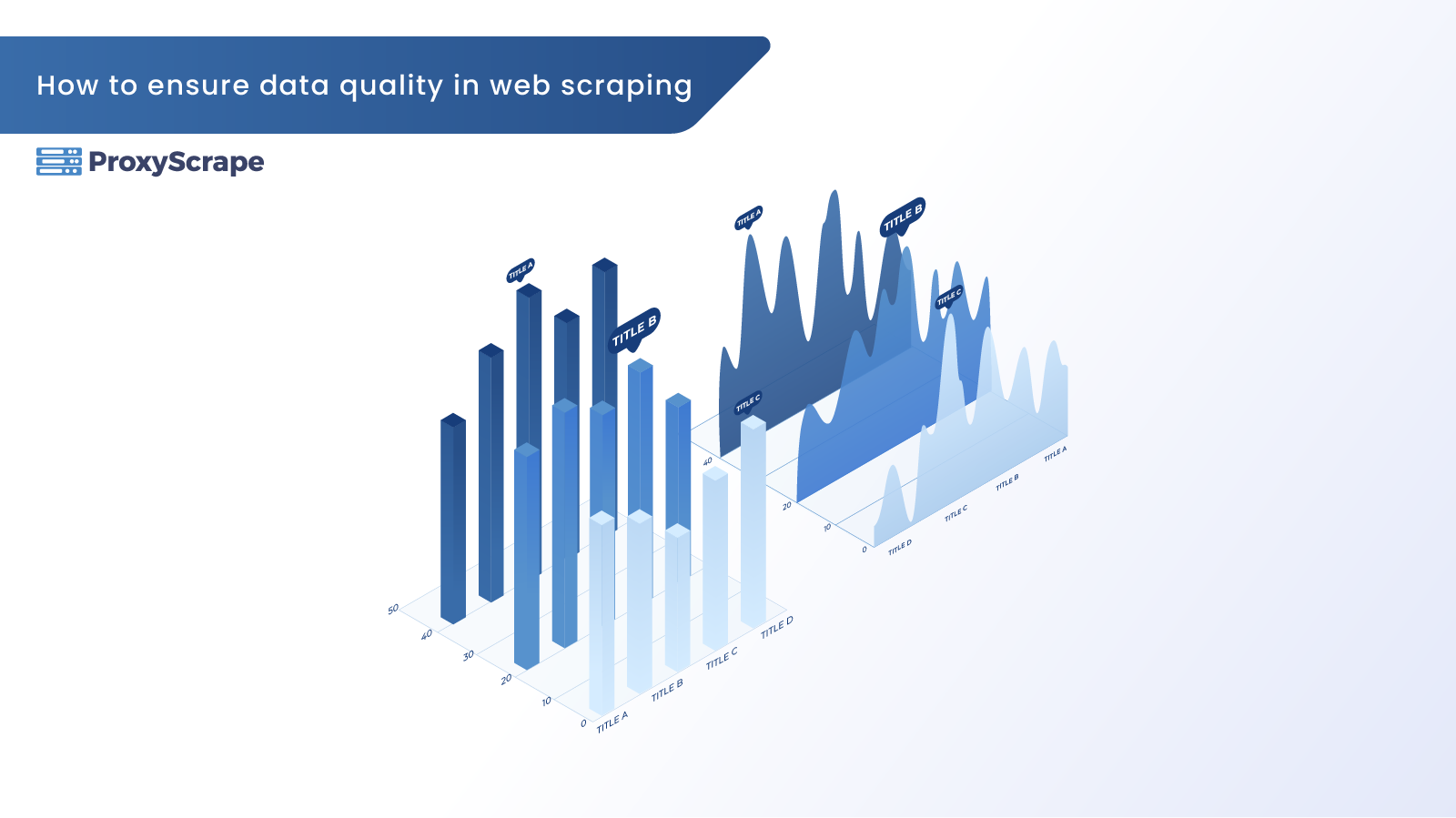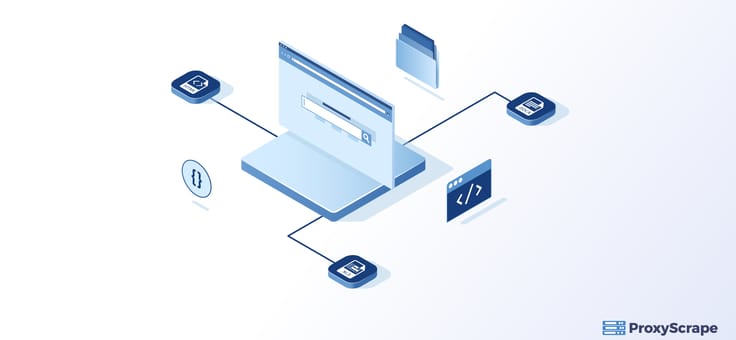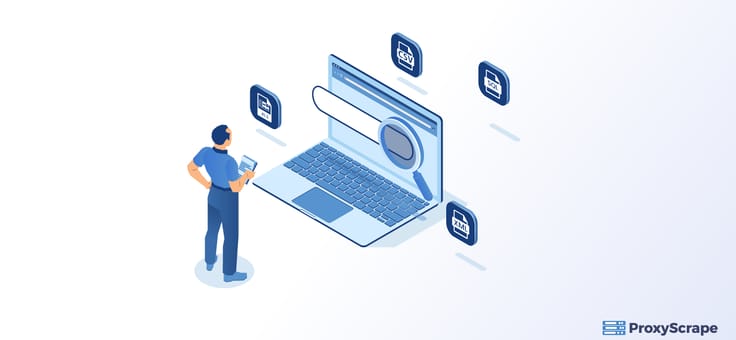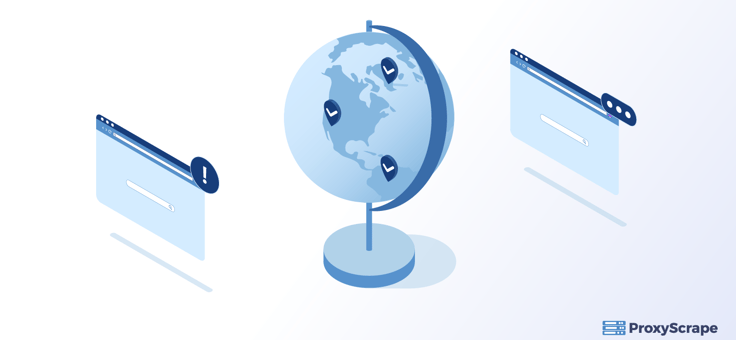
One aspect of web scraping that countless organizations and individuals often overlook is the quality of the data they extract. Extracting high-quality data remains a challenge in large-scale web scraping projects. On the other hand, many organizations also do not pay the desired attention to data quality until it troubles them. In this article, you”ll
One aspect of web scraping that countless organizations and individuals often overlook is the quality of the data they extract.
Extracting high-quality data remains a challenge in large-scale web scraping projects. On the other hand, many organizations also do not pay the desired attention to data quality until it troubles them.
In this article, you”ll gain insight into extracting high-quality data in order for your web scraping project to succeed.
But first, let’s commence with the characteristics of quality data.
How do you define quality data?
There is undoubtedly no yardstick that defines quality data as good quality data might be poor for others. Instead, measuring data quality will depend on identifying and weighing the data characteristics for organizations’ applications that will use these data.

You can use the below properties as a guideline to base the quality of data:
Accuracy and precision:
This character specifies how accurately the data represents the real-world condition without misleading information. You will not get the desired results when you plan your next course of action on incorrect data. Furthermore, it would incur additional costs to rectify the moves due to inaccurate data.
Completeness and Comprehensiveness:
The primary characteristic of complete data is that it should not contain empty or incomplete fields. Like inaccurate data, incomplete data would lead to organizations making decisions that adversely affect the business.
Validity/data integrity:
Typically, data in a valid data set is in the correct format with values within the range and are of the correct type. It refers to the process of data collection rather than the data itself. The data that does not satisfy the validation benchmarks will require additional effort to integrate with the rest of the database.
Consistency and reliability:
This characteristic denotes that a piece of information from a particular source doesn’t contradict the same information from a different source or a system. As an example, if the date of birth of a prominent figure is 7th September 1986 in one source, in another, you may find that his birthdate is 7th October 1986. This inconsistency in data would ultimately result in extra costs and reputational damage to your organization.
Timeliness:
As the name implies, timeliness refers to how up-to-date the information is. With time, the accuracy of the information in sources becomes outdated unreliable as it represents the past and not the present situation. Therefore, it is critical to extract timely information to achieve the optimum outcome for your efforts. Otherwise, if you base your decisions on outdated information, it would result in missed opportunities for your organization.
Web scraping to ensure data quality
One of the ways in which you can acquire quality data is through web scraping. Those who are not familiar with web scraping may refer to this article. However, web scraping is not without challenges.
So now it’s time to focus on the challenges for web scraping that may affect the quality of the data that we discussed above.
The challenges of web scraping that affect the quality of data
1.Requirements
To acquire quality data from web scrapers, you need to define your requirements clearly in terms of what data you require. It is hard for the web scraper tool to verify the quality of data without having an accurate picture of what data you need, what it would look like, and the level of accuracy you require.
To achieve quality data, you need to define the requirements clearly and practically and must be testable, mainly when at least one of the following conditions are true:
- The target website that you’ll be scraping has a variety of page layouts and various combinations of data.
- The fields that you request for an item are pretty large.
- The target number of items is quite large.
- You can scrape the data according to some form of filtering, for example, filter data based on geographical location.
- A mobile device can scrape data.
2.Changes to website structure:
Website owners and their developers often update the frontend part of a website. As a result, a page’s HTML structure changes, constantly breaking up the spiders or web page crawlers. This is because a developer builds a web crawler according to the HTML structure at that time.

So due to this breakdown in the crawler, the accuracy and timeliness of the data will degrade.
3.Fetching the wrong data:
Let’s say there is a complex webpage with too many nested HTML tags. So when you need to extract data from an innermost nested element, you will find it quite a challenge to extract it. It is because the auto-generated XPath in web crawlers may not be accurate.
As a result, the crawler will fetch that data you don’t need.
4.Not being able to monitor continuously
Maintaining the quality of data while scraping can be a massive challenge. The data records that do not fulfill the quality that you expect would impact the data’s overall integrity. Because online scraping occurs in real-time, ensuring that the data meet quality criteria.
Constant monitoring is essential, and you need to test the quality assurance system and validate against new cases. It’s insufficient to have a linear quality control system; you also need a robust intelligence layer that learns from the data to maintain quality at scale.
If you utilize any data as a basis for machine learning or artificial intelligence initiatives, erroneous data might create grave difficulties.
5.Log in requirement
Before scraping any content from some websites, you must first log in. When crawlers require a login, your crawler may become standard and idle. As a result, the crawler would not extract any data.
6.Incomplete data extraction
Have you seen some websites like Twitter or Facebook loading more content as you scroll down? It is due to dynamic content loading via Ajax. So in such websites, if the bot doesn’t scroll down, you”ll it will not be able to acquire the entire content. As a result, the data that you extracted will not be complete.
7.Verifying the Semantics of the data
It is quite a challenge to verify the semantics of the textual data that you scrape from websites through a unified automated QA process. Most firms are developing systems to help the verification of the semantics of data that you scrape out of websites. However, no technology fits into finding semantics in every scenario.
Hence the order of the day is manual testing which is quite challenging.
8.Anti Bot countermeasures
If you’re scraping websites at a large scale, say up to 500 pages or more, you’re likely to encounter anti-bot countermeasures. These include IP bans when you make quite a considerable number of requests.

If you’re scraping reputed eCommerce websites, let’s say Amazon, you’ll even confront more sophisticated anti-bot countermeasures such as Distil Networks or Imperva. These websites may falsely assume you’re launching a distributed denial-of-service (DDoS) attack.
How to ensure the data quality through an automated QA process
Since you”ll be scraping data from hundreds to thousands of web pages, the only feasible way to determine the quality of the data you have scraped is through an automated method.
Here are a few elements that you need to check:
Data Quality and correctness
You need to make sure you’ve scraped the correct information. For instance, you have taken the fields that you have scraped from the correct page elements. Also, it would help if you made sure that the automated process has post-processed the data that the scrapper had scrapped.
These include removing HTML tags from content, relevant formating, white spacing, and striping off special characters from text. The field names are also identical to those that you specified. This process would ensure that the data is precisely in the format that you requested during the requirements phase.
Coverage
As far as the coverage is concerned, you need to ensure that the scraper has scraped all the individual items. These unique items include products, articles, blog posts, news listings, etc.
After identifying the items, you need to ensure that the scrapper has scrapped all the fields for that item.
Spider monitoring
The spider monitoring process is a critical component of any web scraping process to ensure the data quality assurance that the scraper will scrape. In such a monitoring system, you would be able to insect spiders in real-time with the output they capture.
Furthermore, a spider monitoring system enables you to detect the origins of potential quality issues immediately after the spider has completed the execution.
Usually, a spider or scraper monitoring system should verify the data it has scraped against a schema. This schema should define the structure you expect, data types, and restrictions in value from the scraped data.
Other prominent features of the spider monitoring system would be detecting errors, monitoring bans, item coverage drops, and other significant functions of spider executions.
It would help if you also used frequent real-time data validation approaches for spiders that operate in long runs. This technique will enable you to stop a spider if it discovers that it is collecting inappropriate data. Then a post-execution data evaluation would also help.
How could proxies assist in web scraping?
Proxies are the first and foremost essential component of any web scraping project. When you need to scrape tons of pages from websites through a bot, you must send multiple requests to the target website.

As I have mentioned earlier, since most target websites block your IP address, you need to use a proxy server to disguise your real IP addresses.
However, a single proxy would not be sufficient for the job, as if you use a single proxy, the result would be an IP ban. Instead, what you would need is a pool of rotating residential proxies.
We would recommend outsourcing your proxy management aspect unless you have a dedicated team for it. Many proxy providers provide various services; however, finding a reliable proxy provider is quite a challenging task.
At ProxyScrape, we thrive to provide optimum service with various proxy types to satisfy your needs. Please visit our services page to get more details.
Moving Beyond Proxies
Using a proxy provider will not be sufficient to minimize anti-bot countermeasures that many websites currently employ.
Most of these websites use javascript to determine if the request originates from a bot or a human. So that being the case, you should restrict your use of scriptable headless browsers such as Splash or Puppeteer. These headless browsers render any javascript on the page while scraping at scale because they are resource-intensive, and thus they reduce the speed at which you scrape the data.
So with the use of proxies, you must make your scraper or a bot scroll like a human.
Conclusion
Now you may have a comprehensive overview of how challenging it is to achieve data quality. If you use proxies and use other measures such as avoiding headless browsers altogether to scrape data, you’re on the right track.
Also, you need to develop data validation techniques during and after validation to ensure that the data you scrape is up to quality.